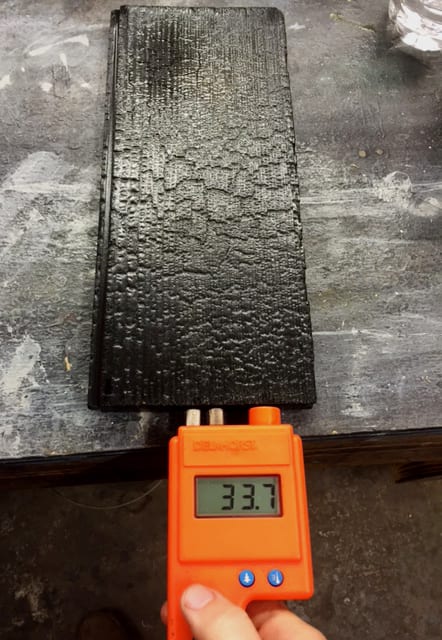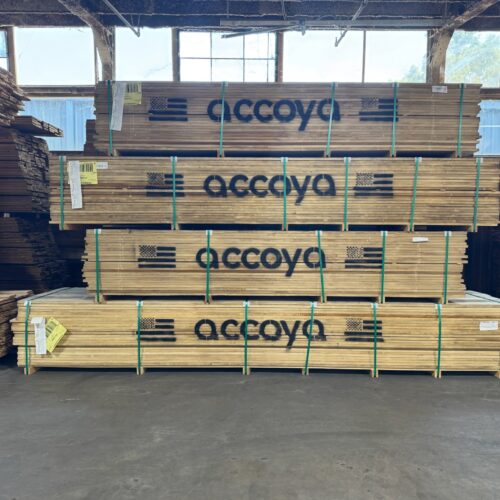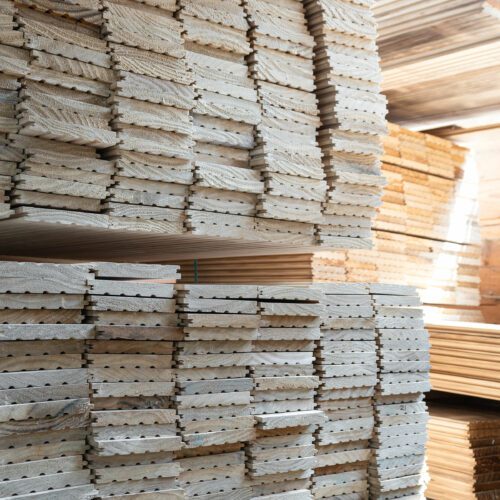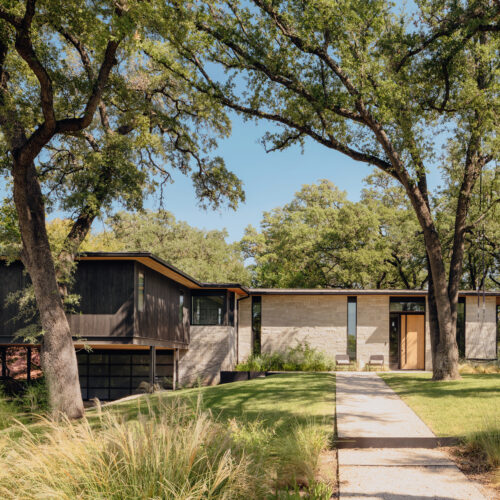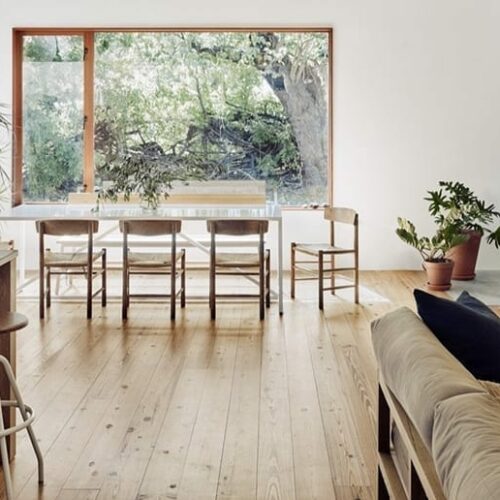A study that set out to determine whether burning wood helps the wood resist moisture.
All of us who work with or use wood are entranced by it. It may be the most natural product one could use. It creates a sense of warmth and comfort to those who walk on it, sit on it or are surrounded by it in our homes and offices. However, those who are familiar with wood know that, despite all of its richness and beauty, it’s equally frustrating.
Why? Because wood, like we are, is a living thing that is highly variable.
Most consumers and users of wood tend to ignore its quirks and potential flaws, while basking in its beauty. By doing this, the consumer is being set up for a really bad date. Wearing rose colored glasses with wood is a fatal mistake that will ultimately lead to a nasty breakup between the formerly infatuated. But, it doesn’t have to be that way. Like any relationship, understanding the details and taking the good with the bad helps tremendously.
Wood can be set off easily. Beautiful siding or flooring can turn crooked, check, bow, or warp and ruin everything. People don’t understand how this can happen. How did something so great suddenly become so evil?
Like anything, certain changes can set wood off – the primary culprit being moisture. Moisture is what gives trees life, but it also is detrimental to lumber. To make wood last, the primary thing that all handlers of it need to do is keep it dry. From sawmills, to fabricators, contractors and home owners, keeping wood dry is an essential function to insuring its longevity.
There are many ways one can keep wood dry, from the more obvious, such as, don’t leave lumber outside in the weather, to the subtle, installing a rain screen or using the proper sealer.
We elected to do a study to see whether or not charring wood prevented boards from absorbing as much moisture as raw lumber. Our hypothesis was that the surface char would disallow so much moisture from penetrating the wood. We took 10 siding products that had been exposed to identical environments in our mill and we cut the boards in half, giving us two 12” pieces of each. We burned the faces on one half of our test subjects, then proceeded to test the moisture content of each board.
Moisture Content
- Select Cypress (Unburned: 8.1%) (Burned: 7.4%)
- #2 Cypress (Unburned: 8.8%) (Burned: 5.8%)
- Redwood (Unburned: 6.8%) (Burned: 5.8%)
- VG Doug Fir (Unburned: 10.8%) (Burned: 8.9%)
- Douglas Fir (Unburned: 7.7%) (Burned: 6.1%)
- Yellow Pine (Unburned: 7.5%) (Burned: 7.5%)
- Noroshi (Unburned: 6.2%) (Burned: 7.3%)
- Katana (Unburned: 5.8%) (Burned: 5.8%)
- Western Red Cedar (Unburned: 13.2%) (Burned: 11.2%)
- Sinker Cypress (Unburned: 15.5) (Burned 13.2)
Obviously, in every case but two, the burned subject’s absorption was lower than its counterpart, as was to be expected after such an exposure to high heat. However, what we wanted to test was whether or not the data would show similar results after all of the pieces were submerged in water for the same amount of time. We left every piece submerged in water for 72 hours and then rerecorded our results. What we found was in line with our hypothesis.
Moisture Content after Submersion
- Select Cypress (Unburned: 33.1%) (Burned: 31.4%)
- #2 Cypress (Unburned: 38.3%) (Burned: 33.59%)Redwood (Unburned: 38.3%) (Burned: 33.7%)
- Redwood (Unburned: 38.3%) (Burned: 33.7%)
- VG Doug Fir (Unburned: 36.5.8%) (Burned: 31.5%)
- Douglas Fir (Unburned: 37.7%) (Burned: 40.1%)
- Yellow Pine (Unburned: 44.5%) (Burned: 35.3%)
- Noroshi (Unburned: 34.5%) (Burned: 31.3%)
- Katana (Unburned: 36.4%) (Burned: 30.9%)
- Western Red Cedar (Unburned: 35.7%) (Burned: 31.7%)
- Sinker Cypress (Unburned: 40.2) (Burned 39.5)
Things of note from the testing:
- This was an informal test; however the data does suggest that the charred surface prevented dramatic water absorption. Every board, except the Douglas fir, had a higher moisture reading on the raw board than the gatored.
- You can see that the boards were subjected to the same environment, due to the fact they all read similar contents, regardless of their previous reading.
- The Katana displayed the lowest reading in both the initial testing and the final.
- The largest gap between readings was in the unburned and burned Southern Yellow Pines.
- The smallest was in the readings of the Select Cypress.
In the end, our guess was backed up by the data. This is not an official test, but we can safely assume that the charring helps controls a highly variable organism’s complicated relationship with moisture. This ultimately leads to improve wood owners’ relationships with their siding.


